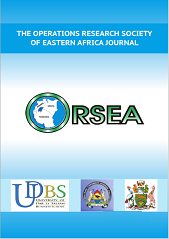Forecasting the Sustainability of Tax Revenue in the Context of Post-ICT Adoption: The ARDL and Markov Chain Model Approach
Abstract
In contemporary society, Information and Communication Technology (ICT) is widely recognised as an effective tool for optimising the process of collecting tax revenue. However, the empirical literature is not conclusive, as several studies have indicated mixed effects of ICT adoption on tax revenue. Arising from this, the study investigated the cointegration relationship between ICT investment, ICT imports, internet usage, broadband penetration, Economic growth, and Tax revenue in Tanzania from 1997 to 2022. Findings from Autoregressive Distributive Lag(ARDL) Bound tests indicated all variable are cointegrated and the Error Correction Model (ECM) estimates confirmed that ICT investments, ICT imports and Broadband penetration has positive and significant influence on tax revenue in long-run. Only Internet Usage was found to have negative influence on tax revenue reflecting a warning on the effect of e-commerce on the current tax systems, specifically in developing country. With existing ICT infrastructures, Markov Chain Model exhibits a stable state after 4 years. Beyond this point, tax will continue to increase at a consistent rate. The Markov model findings suggest that there is a 0.628 probability of tax revenue being in an increased state. Conversely, the analysis reveals a 0.372 probability of a decrease in tax, suggesting probable difficulties in generating long-term revenue. These findings evidence that governments and policymakers should use technological improvements to better anticipate changes in revenue streams using the Markov chain and ARDL Model. The study recommends governments integrate electronic systems and align with tax laws to online resources to automate and modernise their tax operations.
Key words: Tax revenue, ICT adoption, ARDL Model, Markov Chain model






